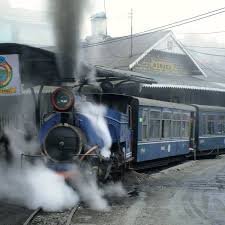The introduction of railways had profound socio-economic effects across various countries, shaping economies, societies, and cultures in diverse ways. Here’s an overview of these impacts in different regions:
Europe
Economic Effects:
- Industrial Growth: Railways facilitated the rapid movement of raw materials and finished goods, spurring industrial growth and expansion. The coal, steel, and manufacturing industries particularly benefitted.
- Market Expansion: Railways created larger, more integrated markets by connecting distant regions, thus lowering transportation costs and encouraging trade.
- Urbanization: Improved transportation led to the growth of cities as people moved in search of jobs created by expanding industries.
Social Effects:
- Mobility: Railways increased personal mobility, allowing people to travel for work, education, and leisure, which broadened social horizons and cultural exchanges.
- Social Stratification: Railways sometimes accentuated social divides, as wealthier individuals could afford more comfortable travel, while the working class often traveled in less desirable conditions.
- Standardization of Time: Railways necessitated the standardization of time across regions, leading to the establishment of time zones and synchronized clocks.
United States
Economic Effects:
- Westward Expansion: Railways played a crucial role in the westward expansion of the United States, opening up vast tracts of land for settlement, agriculture, and resource extraction.
- Economic Integration: The rail network integrated the national economy, linking agricultural producers in the Midwest with industrial markets in the East and West.
- Capital Investment: The construction and operation of railroads attracted significant capital investment, driving the growth of financial markets and institutions.
Social Effects:
- Migration and Settlement: Railways facilitated mass migration, including the movement of settlers to the western frontiers and immigrants to new opportunities in urban centers.
- Native American Displacement: The expansion of railroads often led to the displacement of Native American communities, resulting in significant cultural and demographic changes.
- Labor Movement: The construction and operation of railways provided jobs but also led to labor disputes and the rise of labor unions advocating for workers’ rights.
India
Economic Effects:
- Colonial Economy: Railways were primarily developed to serve the economic interests of the British colonial administration, facilitating the export of raw materials and the import of British goods.
- Agricultural Markets: Railways connected agricultural producers with markets, allowing farmers to sell surplus produce and access new inputs, although often at the expense of local subsistence farming.
- Regional Disparities: While some regions benefitted from improved connectivity and economic opportunities, others were neglected, leading to uneven regional development.
Social Effects:
- Cultural Exchange: Railways enabled greater cultural exchange and mobility among India’s diverse population, fostering a sense of national identity.
- Urbanization: The growth of railway hubs led to the development of cities and towns, changing social structures and lifestyles.
- Health and Education: Improved transport facilitated access to healthcare and educational institutions, although benefits were unevenly distributed.
Japan
Economic Effects:
- Industrialization: Railways were a critical component of Japan’s rapid industrialization during the Meiji era, supporting the growth of industries and the integration of regional economies.
- Modernization: Rail infrastructure was part of broader efforts to modernize Japan, adopting Western technologies and practices to enhance economic competitiveness.
Social Effects:
- Urban-Rural Divide: Railways contributed to the migration of people from rural areas to cities, accelerating urban growth and transforming social structures.
- National Integration: Improved transportation fostered a sense of national unity and cultural cohesion, crucial for the development of a modern nation-state.
- Education and Innovation: Enhanced connectivity promoted the spread of education and technological innovation, essential for Japan’s development into a leading global economy.
Africa
Economic Effects:
- Colonial Interests: Railways were often built to serve colonial economic interests, such as the extraction of minerals and agricultural products, rather than the needs of local populations.
- Infrastructure Development: Railways spurred infrastructure development in some regions, providing a foundation for future economic growth, although the benefits were uneven.
Social Effects:
- Labor Mobility: Railways facilitated the movement of labor, both within colonies and across borders, impacting local communities and economies.
- Cultural Disruption: The introduction of railways often disrupted traditional societies, leading to cultural changes and sometimes resistance against colonial rule.
- Urbanization: Railways contributed to urbanization, with the growth of railway towns and cities altering social and economic landscapes.
Summary
The socio-economic effects of railways varied significantly across different countries, but common themes include industrial growth, market integration, urbanization, increased mobility, and significant social changes. While railways often drove economic development and modernization, they also led to social stratification, displacement, and cultural transformation, highlighting the complex interplay between technology and society.


